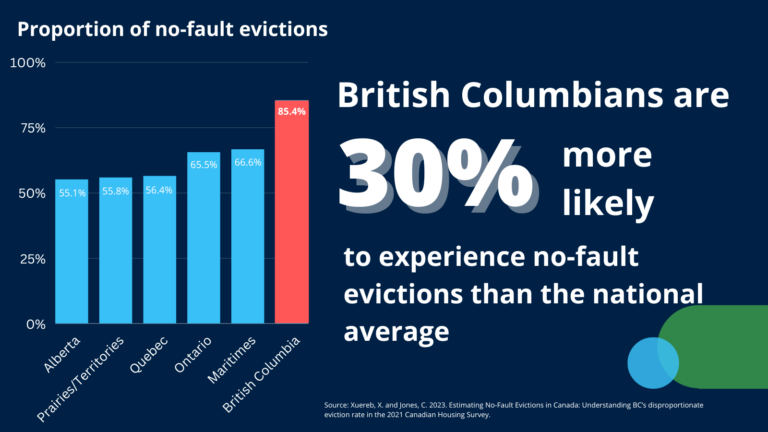B.C. still eviction capital of Canada and most are through no fault of the tenant
B.C. still leads Canada with the highest eviction rate in the country, and the vast majority are no-fault, according to a new report.

B.C. still leads Canada with the highest eviction rate in the country, and the vast majority are no-fault, according to a new report.
Researchers from UBC’s Balanced Supply of Housing research cluster analyzed 2021 Canadian Housing Survey (CHS) data from almost 41,000 Canadian households and found more than one in 10, or 10.5 per cent of B.C. renter households, reported being evicted during the five years prior to data collection, compared with only 5.9 per cent nationally. Prince Edward Island was second at eight per cent, followed by Nova Scotia and Ontario at just over six per cent.

The results are consistent with the 2018 CHS survey although a difference in definitions means the rates can’t be directly compared.
For the first time, researchers drilled into the reasons for evictions across the nation and in the four largest provinces, as self-reported by tenants. In B.C., 85 per cent were ‘no-fault,’ meaning the tenants were evicted for landlords’ own purposes, to sell the property, for demolition, conversion or major repairs. That’s compared with about 65 per cent nationally and in the next nearest regions, Ontario and the Maritimes.
“What we’re seeing is that B.C. is different from the other regions we’re looking at. It has a high rate of no-fault evictions, which does challenge assumptions around the main cause of eviction,” said co-author Dr. Craig Jones, associate director of the UBC housing research collaborative. “Traditionally we think of evictions being caused by not paying your rent or not being a good tenant, but what the survey suggests is that tenant behaviour has very little to do with evictions in B.C. It’s more about the real estate market.
The most common reason reported for no-fault evictions nationally was sale of the property, at one-third of all evictions, followed by landlords wanting the property for their own use or their immediately family’s, at 25 per cent.
“People should be aware that evictions are often not the tenants’ fault, and that should reframe how we address this issue,” said co-author Silas Xuereb, an independent researcher. “We should be thinking about the structure of the housing market and who owns housing.”
The researchers found that despite eviction bans, at least 38,900 to 68,080 renter households were evicted during the first year of the pandemic in Canada.
Other notable findings from the data
- Tenants in social housing were less likely to be evicted with just over four per cent of tenants in social housing facing eviction in the last five years compared with six per cent of tenants in private housing.
- Indigenous renters were 1.7 times more likely to be evicted than non-Indigenous renters after accounting for differences in age, family structure, income, education, and province of residence.
- Renters over age 75 were less likely to be evicted at only 1.4 per cent, perhaps owing to the fact that they’re less likely to live in private housing where evictions are more common.
The reasons for evictions were reported by tenants and may not align with those reported by landlords. Only renter households contributed to the analysis, so it excludes people who did not move into rental housing after being evicted. However, the authors say neither limitation can explain why renters in B.C. are much more likely to experience no-fault evictions than in the rest of Canada.
Interview language(s): English (Jones)



